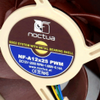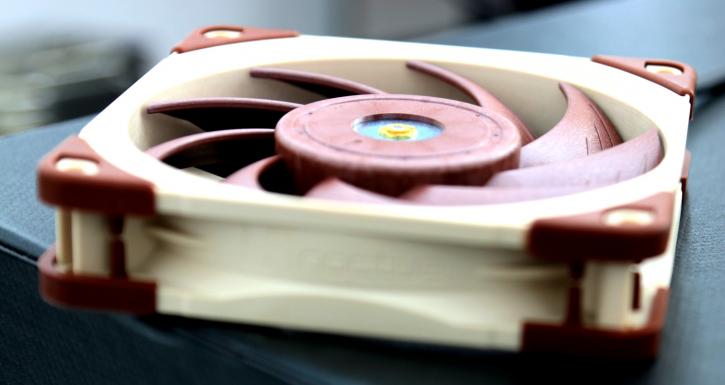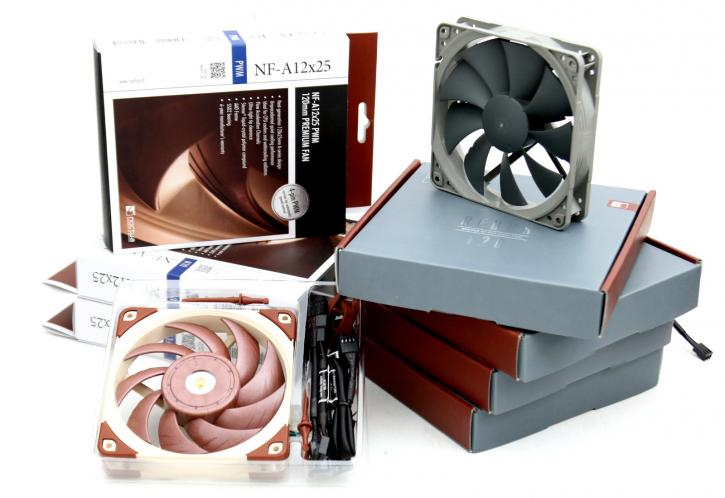For my fans
Noctua NF-A12x25 and NF-P12 Redux fan group review
Silence and airflow performance for the masses
So here's how the story goes. A year or two ago I was attending Computex, Noctua back then told me a story about a fan series they have had in development for years. This year, however, they finally released the NF-A12x25 series fans. In total, these fans they've had in development for over four years (!). And when Noctua releases something, yes you may argue the colors, but you know is just has to be good right? By the way, many of you will be happy to learn this, there's no RGB to be found here! Yes, you can safely read onwards.
Sterrox is what it is all about while being a marketing name for a stiff hard compound based liquid crystal polymer, now used for the fans. Sterrox is based on the raw materials used in Kevlar, and thus now end up in this particular fan series, the NF-A12x25 fans. The material used will stiffen the fan blades and casing so that they can get smaller tolerances (spacing in-between the blades and frame) of the fan housing. This not only helps in airflow, but also will serve for better acoustics.
The all-new Sterrox based NF-A12x25 series - check out how close the fan blades are to the casing
Noctua went innovative in the design, the distance between the frame and the fan blades is a staggering 0.5 millimeter, this normally is 1.5 and sometimes even up to 3 millimeters. Smaller tolerances need a rigid frame or else the fan blades could hit the outer frame. For this, Sterrox LCP comes into play. Not just that, next to the new NF-A12x25 models, Noctua also release a more affordable grey fan series in their redux line, the NF-P12 Redux. The Redux fans as stated are a way more affordable at 14 bucks per fan, but certainly, do not disappoint in terms of airflow performance and low noise levels. We'll take a look at these as well.
So when Noctua released the NF-A12x25 series they contacted us, asking if I wanted to have a peek at the new NF-A12x25 series. And sure, if you work for four years on a fan, you deserve a review. So a week later I received a kit with seven fans. Most of you will know about it, I am not the kind of person that likes to perform fan reviews as there are so many variables that come into play. Each PC is different, all ambient temperatures are different from country to country. One person will say that 35 DBa is silent, the other will find that value too noisy. Within that mindset and framework, I have been thinking about how we could review fans as objective as possible. So with that in mind, I've created a policy for fan testing. I will immediately state though, we're not a laboratory so the results you'll read in this review are pretty good, but certainly not perfect. 'As objective as can be' likely, is the best description for our testing results today. We'll test the fans based on fixed voltages; 4 Volts and 12 Volts, that way we create an equal workload for each fan tested. With an anemometer, we'll measure the airflow in meters per second moving. We'll perform an acoustics measurement at a 40cm distance of the fans. And last but not least we'll test the cooling effect of these fans at that 4V and 12V setting. We'll do that with a 90W TDP quad-core processor fixed at 4600 MHz / 1.3 Volts with continuously the same stressed load. The result set derived from this test will pain a certain picture as to what fans perform the best at an acceptable noise level. The fans tested today are:
Noctua
- NF-A12x25 FLX (2000 rpm)
- NF-A12x25 PWM (2000 rpm)
- NF-A12x25 ULN (1200 rpm)
- NF-P12 Redux 1300
- NF-P12 Redux 1300 (PWM)
- NF-P12 Redux 1700
- NF-P12 Redux 900
- NF-P14
- NF-F12 PWM



